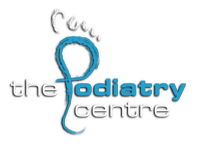Your Calf Muscles; Overused and Under-Loved. The Importance of Regular Calf Stretching
Calf muscle tightness is a problem. Whether patients are able to appreciate the effect of tight calves or not, they most certainly can feel them. The clinical reality is that some patients who present to a podiatry clinic complaining of musculoskeletal pains often show very clear signs of calf muscle tightness. Very few however, are able to draw a link between their presentation and the tightness of their calves. The calf muscle is actually made up of two separate muscles, the gastrocnemius and soleus, which form one functional compartment. The calf muscles join at their end to the Achilles tendon which forms a connection between your foot and leg. The calf muscles act on the ankle joint to place the foot in a downwards (plantarflexed) position which brings the ball of the foot into contact with the ground and shortens the Achilles tendon. Overly tight calf muscles can predispose patients to injury as well as affect the way their feet and lower limbs function and consequently can affect other parts of the body as well.
What causes tight calves?
Tightness in the calves can have many causes. Some range from external influences such as wearing heels, excessive sports training or internal influences such as genetics.
- Extensive use of high heels keeps the Achilles in a shortened state whilst reducing the distance between muscle fibres of the calf muscles. Keeping the Achilles in this shortened state can eventually make wearing flat shoes painful as patients will be forcing their Achilles to move from a short state to a lengthened state quickly.
- Exercising without stretching the calf muscles will cause retraction of the muscle fibres during the recovery phase. Repeating this will eventually lead to tightness through the calf muscles and not only reduce the range of motion of the ankle but also predispose the athlete to potential injury.
What are some consequences of tight calves?
- Inflammation of the Achilles and other compensatory tendons.
- Shin splints and potential shin stress fractures.
- Inflammation of the patella tendon.
- Knee pain.
- Back pain.
- Heel pain/plantar fasciitis.
- Pain underneath the ball of the feet which may involve bony swelling.
- Reduced ankle and toe range of motion which will affect a patient’s gait.
- Predisposition to muscular tears during sport.
- May predispose a patient to developing bunions (hallux valgus).
- May result in callouses and corns on the feet due to overload of certain parts of the feet during weight bearing activity.
What are some calf stretches that can help loosen my calf muscles?
There are a number of calf stretches that can be utilised to reduce the tension through the muscle fibers. The golden rule for any stretch is hold for 30-60 seconds, repeat 3 times, once or twice a day.
- Standing Calf Stretch
- Stand in front of a wall and place your hands on it. Move one foot behind you an keep the toes of the trailing leg always pointing forwards. Keeping your heel of the leading leg on the ground, lean forward towards the wall slightly bending at the leading knee. Hold this position when you feel the stretch.
- Off a step
- Place the ball of the foot on the edge of the step and slowly lower yourself until you feel the pull in the calf. You can do one or both feet depending on the level of your balance and co-ordination
- Calf Stretch Using a Belt/Resistance band
- Place the towel/belt/band around the ball of the foot and straighten the knee. Pull the sides of the strap with equal force towards you moving the toes towards you in the process. Hold this position for 30 seconds. Slowly bend the knee whilst maintaining the tension on the straps. Hold for a further 30 seconds.
Dr Anel Kapur (Podiatrist)
